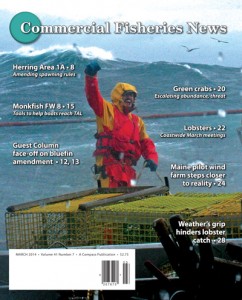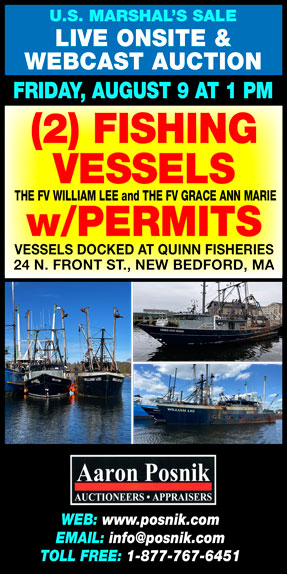Taking up the theme of fishing vessel safety can be a hazardous thing to do in a CFN editorial since it entails walking that fine line between helpfully calling readers’ attention to a fundamentally important topic and alienating them with nagging. However, this month’s “Along the Coast” column features a particularly pointed example of the wisdom of being prepared.
So, metaphorically speaking, let’s dive in.
 On Feb. 12, Devin Pesce, a 19-year-old who was crewing on his dad’s lobster boat, accidentally stepped into a snake’s nest of trawl rope as it paid out. The rope grabbed him by the ankle, yanked him over the transom, and dragged him beneath the waves into bitter cold water.
On Feb. 12, Devin Pesce, a 19-year-old who was crewing on his dad’s lobster boat, accidentally stepped into a snake’s nest of trawl rope as it paid out. The rope grabbed him by the ankle, yanked him over the transom, and dragged him beneath the waves into bitter cold water.
Fortunately for everyone, his father and another crewman managed to quickly bring him up and aboard – and, when they realized that he had stopped breathing, they had the CPR skills to bring him back to life.
That’s what good training gives you: The ability to do the right thing fast in an emergency.
Looking through our archives, we find that we have regularly published safety advice for nearly 15 years thanks to the contributions of Ann Backus of the Harvard School of Public Health, who writes our “FISH SAFE” column, and Fred Mattera, an experienced fisherman and fishing vessel safety instructor, who writes our “SAFE BOAT – SMART BOAT” column.
Between them, Backus and Mattera have produced a remarkable body of work, covering an enormous range of subjects. Some are a little complicated, like the physics involved in vessel stability or the chemistry behind deadly oxygen depletion incidents in confined spaces.
But a lot of the advice is about easy things that everyone who sets foot on a boat can and should do.
First and foremost, wear a PFD when working on deck. There are less-cumbersome wearable inflatable models available these days. While a PFD may not have helped Pesce, this simple device can keep your head above water in most man-overboard situations, protecting you from sucking cold water into your lungs when the “automatic gasp reflex” kicks in. The flotation it provides can keep you on the surface long enough for your crewmates to get a life ring to you or for rescuers to find you.
Keep a knife on your body that you can reach if you need to cut yourself free of entangling rope. Take a good look at your survival suit. Make sure it fits and the zipper zips. Practice getting into it. Stow it where you can get it if you need it.
Beyond that, much of the safety advice boils down to this: Get good training and drill, drill, drill until your reaction in an emergency is automatic. This particularly applies to man-overboard, abandon-ship, firefighting, and flood-control procedures.
Finally, a lot of the advice is simple common sense for vessel owners and captains. Set up a schedule for maintaining equipment. Adopt protocols for dealing with icing conditions. Install a reachable emergency shutoff on every winch. Take steps to reduce the risk of flooding. And, be sure that your crew’s first aid and CPR training is up to date.
We feel strongly that promoting fishing vessel and crew safety is one of the most important things we do. For that reason, we have begun posting archived “FISH SAFE” and “SAFE BOAT” columns in full on our website so that everyone can access them. Visit < “FISHING VESSEL SAFETY COLUMNS”, and look around. You might be prompted to take action that one day may save a life. /cfn/
 Read the rest and much, much more in the March issue of Commercial Fisheries News.
Read the rest and much, much more in the March issue of Commercial Fisheries News.
Read online immediately and download for future reference.








 Updating...
Updating...